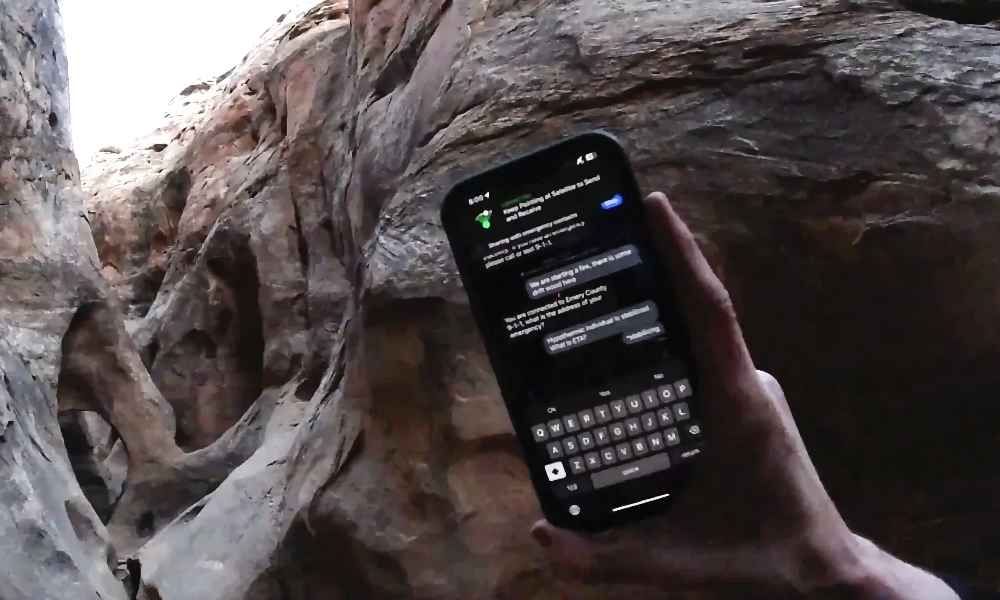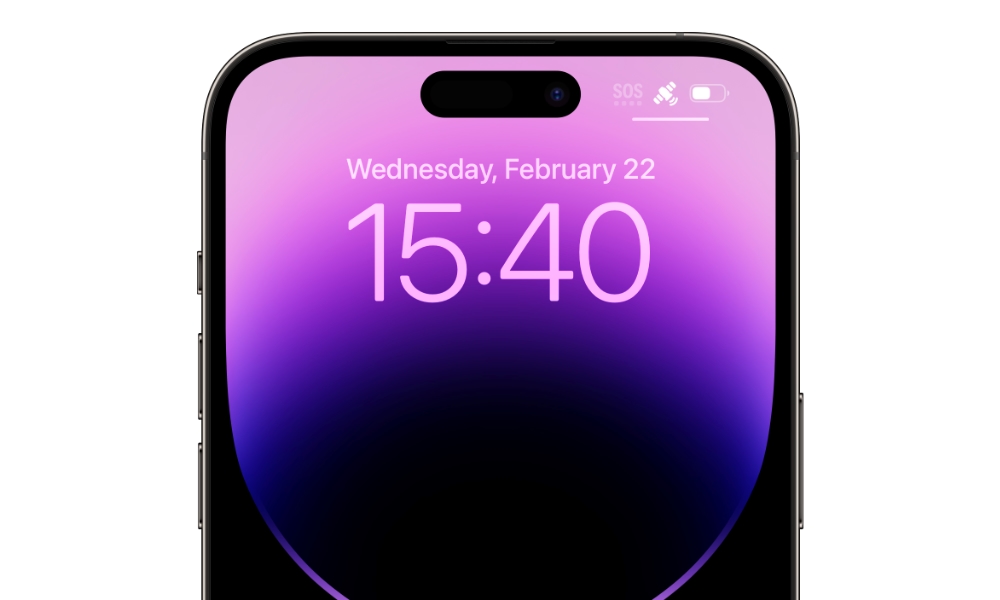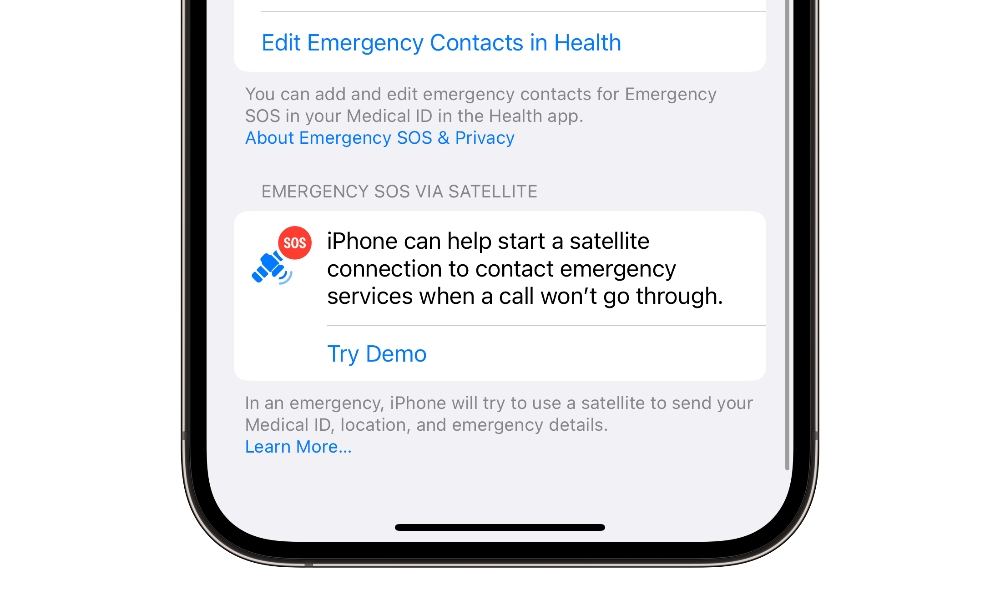Trio of College Students Saved from Frigid Canyon Thanks to iPhone 14’s Emergency SOS via Satellite
 Credit: Jeremy Mumford / KUTV
Credit: Jeremy Mumford / KUTV
Toggle Dark Mode
An iPhone or Apple Watch can be a lifeline in an emergency, but for many folks, that only works if you’re lucky enough to have a cellular signal. Thankfully, that’s more often the case than not, but for those rare situations where you’re stranded miles from nowhere and your phone is showing the dreaded “No Service,” there’s the iPhone 14’s new Emergency SOS via Satellite feature — as three Utah students recently discovered.
According to KUTV in Green River, Utah, a trio of students from Brigham Young University (BYU) found themselves in potentially serious trouble while canyoneering in Emery County last weekend and may have been stuck had one of them not been toting an iPhone 14.
Bridger Woods, Jeremy Mumford, and Stephen Watts had set off on an adventurous excursion into “the squeeze,” a popular destination considered one of the best and most difficult canyons to navigate in Utah’s San Rafael Swell.
Unfortunately, Utah’s unusually wet winter had made the trip more treacherous than the group had initially anticipated. They encountered one deep pool of extremely cold water, where they ended up for nearly an hour before being able to continue their journey, and then subsequently found themselves chest-deep in another area that they were unable to escape from.
After nearly three hours in the cold water, Woods began to experience symptoms of hypothermia, and they were unable to reach the top even by hoisting onto each other’s shoulders.
Fortunately, Watts had an iPhone 14 that he had brought along with him. He initially tried calling 911, but there was no service, so he turned to the iPhone’s Emergency SOS via Satellite feature.
However, even that was a challenge since the trio was deep in a 500-foot canyon. This made it much more difficult to get a fix on a satellite, which had to be directly overhead rather than out on the horizon.
The canyon was about 500 feet deep of sheer, rock walls but about every 20 minutes a satellite would line up where we were in the canyon and by holding the phone up we could get a signal where we could text 911 to Emery County and that definitely saved our butts.Jeremy Mumford
After establishing a connection with the county sheriff’s office and calling for help, the three eventually gained enough traction with their ropes to clip their carabiners on and extricate themselves from the deep water-filled slot. Once free, they were able to locate enough driftwood to start a fire and warm up a bit while waiting for their ultimate rescue from the crevasse, conducted by a group that included paramedics from Arizona and helicopter crews from Salt Lake City.
I’ll be honest, I straight up cried when I saw the helicopter there, they were saying ‘hey, we see you,’” said Woods. “I just have so much gratitude for them and I wish I met them under different circumstances, they all seem like awesome people but again, just a huge, huge thank you.Bridger Woods
The three students had taken the additional precaution of ensuring somebody knew where they were going and when they would be expected to return. Had the iPhone 14 not saved the day, somebody else would have alerted emergency authorities. Still, they could have had a more difficult time locating the group, whereas the iPhone 14’s Satellite SOS automatically included the location alongside the request for help.
How to Ensure Emergency SOS via Satellite is Enabled on your iPhone 14
The good news is that the only thing you need to do to make use of Emergency SOS via satellite is to own an iPhone 14 and ensure you’re up to date with the latest version of iOS 16. Technically, iOS 16.1 is the minimum requirement in the U.S. and Canada, but we’re already well past that version.
iPhone 14 owners in France, Germany, Ireland, and the U.K., require iOS 16.2, and those in those countries where it’s most recently launched — Austria, Belgium, Italy, Luxembourg, the Netherlands, and Portugal — require iOS 16.4. It’s supported on nearly every iPhone 14 model sold globally except those purchased in mainland China, Hong Kong, or Macao, but it only works if you’re physically located in one of the countries listed above.
Emergency SOS via Satellite will only kick in when your iPhone 14 has no Wi-Fi or cellular connection otherwise available, at which point you’ll see an SOS indicator with a satellite icon beside it. At that point, making a normal Emergency SOS call will activate the satellite feature, prompting you to hold your iPhone up to acquire a lock on a satellite and then answer a series of questions that are sent to emergency services along with your location and information from your medical ID in the Health app.
Apple also provides a demo mode so you can familiarize yourself with how the Emergency SOS via Satellite feature works. You can find this by opening the Settings app, selecting Emergency SOS, and looking for the “Try Demo” option near the bottom.









